What is RCBO?
Residual current circuit breaker with Overload Current is a full form of RCBO. RCBO is an automatic electrical switch is used to protect the circuit from overload, short circuit, and earth fault. It is a combination of MCB and RCCB.
RCCB is used to trip the circuit during earth fault conditions. But it will not trip the circuit under any kind of overcurrent fault. In such a way that, MCB will trip the circuit under overcurrent only, it will not trip the circuit under earth fault condition.
Therefore, by considering both the advantages MCB and RCCB, the RCBO is designed. RCBO = MCB+RCCB.
RCBO Circuit Diagram
Refer to the below-mentioned diagram, The Line supply L connected in series with the overload and short circuit, and earth fault protection.
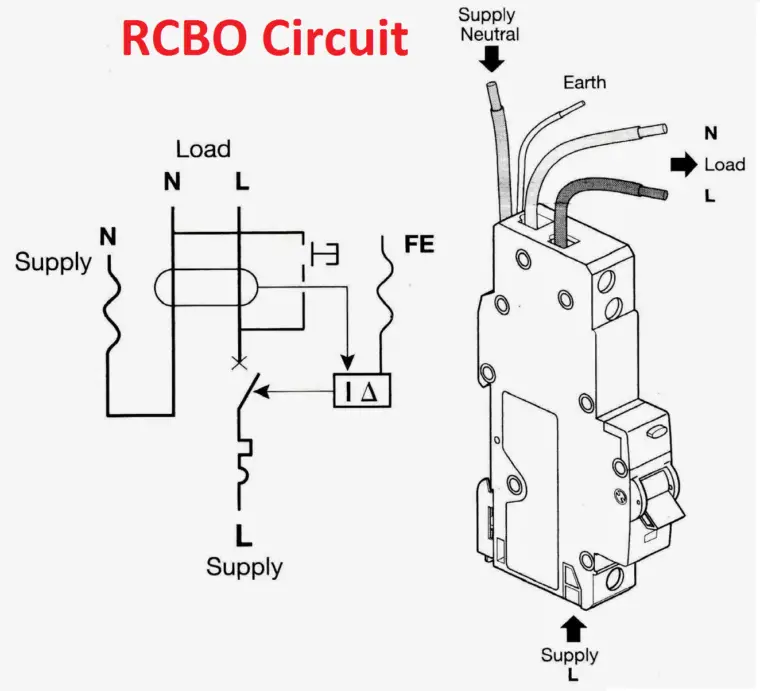
Construction of RCBO:
RCBO consists of two-compartment, one is the MCB compartment and the other one is RCCB compartments.
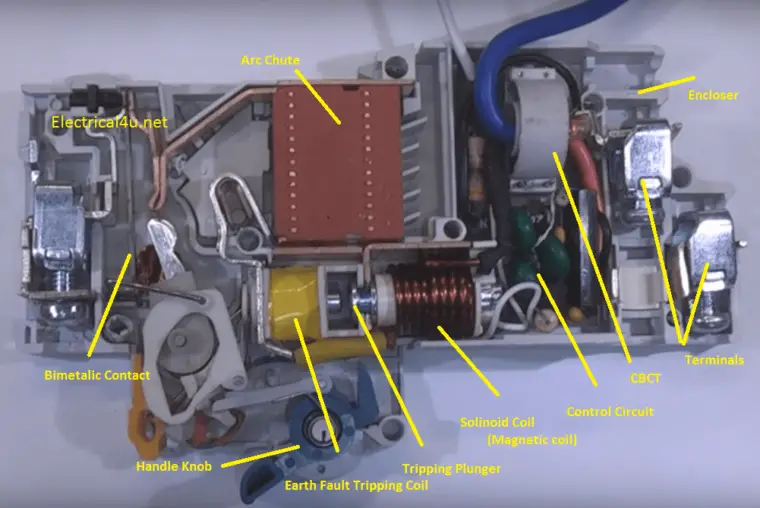
MCB compartment contains,
- Bimetallic contact which uses to trip the circuit during overload. It is designed, not to change the physical property for the nominal current flow.
- Arc chute is an arch quenching equipment uses to protect the breaker while breaking the circuit.
- Handle knob, it indicates the status of the RCBO, when the handle in the upward direction, it is called Turn On, if it is in downward it is called Turn-off/trip.
- A magnetic coil with plunger assembly is used to trip the circuit breaker during overload faults such as instantaneous over the current, short circuit and earth fault.
- Encloser is an insulating material is used to mount all the mechanism within it. It is made up of glass fiber.
- Terminal screws are used to connect the RCBO with external circuits.
- Earth fault tripping coil is used to trip the circuit under earth fault as shown in the figure.
RCCB compartment contains,
- CBCT – Core balanced current transformer is used to find unbalance current flow in the circuit. The line and neutral terminal will be passed through CBCT only.
- A control circuit is used to give tripping command to the coil, during the fault condition.
- Test button- In our picture, we did not mention. It is used to check the working conditions of the tripping circuit.
Working Principle:
Bimetallic contact, short circuit tripping coil, input, and output terminal will be connected in series with each other. The input terminal will be at the bottom side and the output terminal will be at the top side.
Overload & Short Circuit operation
Under normal conditions, the heat generated in the bimetallic contact is not enough to trip the circuit since it is designed to do so.
If the current flow is higher than the rated current, the heat generated in the bimetallic contact is high, then it will get bend and operate the trip mechanism.
Short circuit/Instantaneous Over current protection
The overcurrent fault is performed by the solenoid coil which is in the MCB compartment.
Under normal conditions, the magnetic field generated is negligible.
During fault condition the current will be 5 to 10 times the full load current, therefore, the coil generates a strong magnetic field and it pulls the plunger and plunger trip the circuit.
Earth fault Operation
Earth fault function is performed by the RCCB compartment only.
The CBCT always senses the vector sum of the line current and neutral current of the RCBO.
During the normal conditions, the vector sum is zero, since the line current is equal to zero. hence the output current from the CBCT will be zero. Therefore, the circuit remains stands.
Under the abnormal condition, it means, if phase or neutral wire touches the earth means, the leakage current starts flowing. Hence the line current is equal to neutral current.
CBCT detects the difference between these two current, hence it sends leakage current to the control circuit.
i.e let us take, 30mA RCBO.
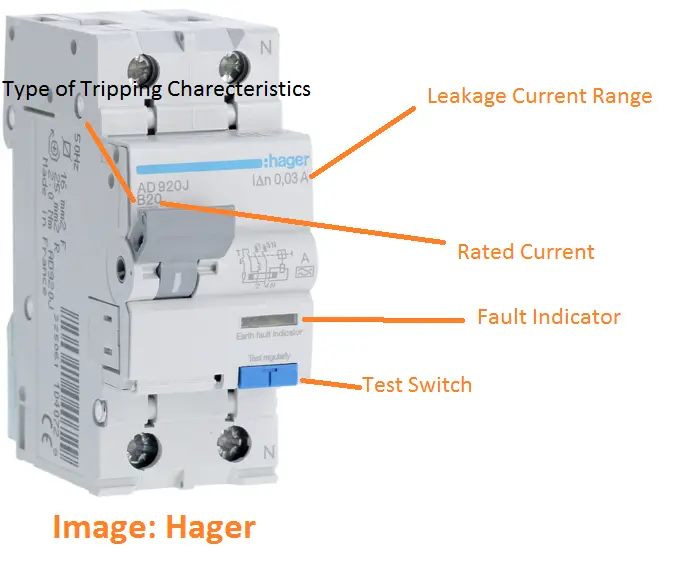
If the leakage current is less than 30mA means, the control circuit will not give the tripping signal. If the leakage current is more than 30mA, it sends the tripping single to earth fault trip coil. The coil trips the circuit.
Advantages and Disadvantages:
Advantages:
- Overload, over current and earth fault protection is available.
- The high degree of safety can be maintained
- No need to keep the spares like fuses, insulation material, wire, etc.
- Compact size
- Easy installation
Disadvantages:
- The current range cannot be adjustable
- Costlier than MCB and RCCB
- It will not operate on DC circuits
Frequency Asked Question:
1. Difference between RCCB and RCBO?
RCCB is used to protect the circuit only from earth’s fault but RCBO is used to protect over current and earth fault.
2. Who is the Best manufacture of RCBO?
Hager is the best one since it is cheaper than Siemens and Schneider RCBOs.
3. How to choose RCBO?
- See the range of rated current.
- Tripping characteristics.
- Number of Poles requirement
4. Does RCBO work on DC circuits?
No, it will not work, only short circuit and overcurrent protection can be achieved. Earth’s fault will not work on DC circuits.
5. What is the suitable tripping characteristics breaker for household applications?
Leakage current of 30mA, Type C or B is suitable for household applications.

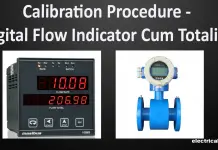
![What is Normally Open & What is Normally Closed [Video Included] What is NO and NC](https://www.electrical4u.net/wp-content/uploads/2020/09/What-is-NO-and-NC-218x150.png)


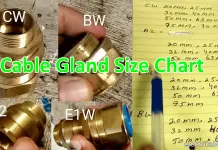

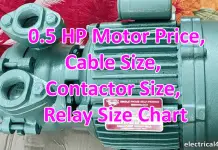
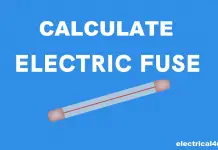
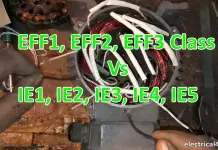
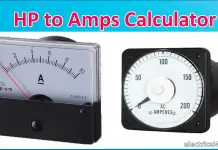
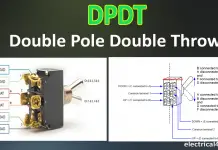
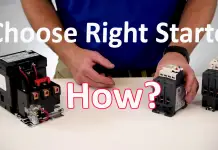
Thanks for the crystal clear information, It means a lot.